


Laboratory instruments
Some of the recently added instruments to the laboratory.
Instruments in the Lab
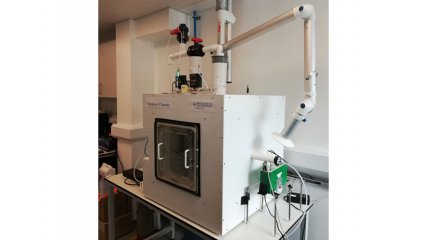
The emergence of low-cost sensors (LCSs) has rapidly changed the landscape of air pollution monitoring. Unlike regulatory standards with comprehensive processes for performance evaluation and certification for reference equipment, no accreditation or regulatory standards exist for LCSs. Hence, calibration and performance assessment of the LCSs are carried out via co-location experiments with high-end reference instruments under limited ranges of environmental conditions and pollutant concentrations.
Members of the GCARE team designed, built and tested an environmental-pollution (referred to as ‘Envilution®’) chamber to generate a controlled environment for temperature and relative humidity (RH) along with different concentrations of particles. This was to enable varied real-world environmental conditions (T/RH) and pollution concentrations (PMs/NOx/O3/SO2/CO) to be generated for the performance evaluation of LCSs.
The unique features of the chamber, including low capital cost, small size and lightweight, low maintenance and operational costs, as well as ease of operation, gives it the potential for it to be an ‘on-demand’ package for LCSs' testing.
Publications
Omidvarborna, H., Kumar, P. and Tiwari, A., 2020. ‘Envilution™’ chamber for performance evaluation of low-cost sensors. Atmospheric Environment, 223, 117264.

The GCARE Filter Testing Rig has been developed to measure the filtration efficiency of filter media for facemasks.
A test filter is placed inside a custom-made filter placeholder of dimensions (6 cm × 6 cm) within the chamber. A portable fan is placed inside the chamber for better mixing of flow at the lower flow rates.
To measure aerosol size concentrations before and after the test filter, the sampling probes respectively are connected to the fast particulate analyser (DMS500). A novel four-way solenoid switching system, constructed for this study, is used with the particle analyser to measure particle number concentration (PNC) at any four selected locations.
Publications
Sharma, A., Omidvarborna, H., and Kumar, 2022. Efficacy of facemasks in mitigating respiratory exposure to submicron aerosols. Journal of Hazardous Materials, 126783.
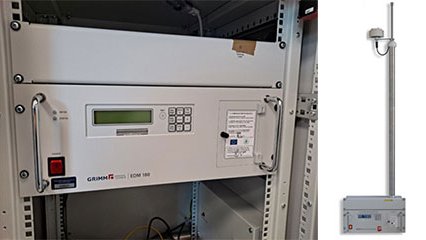
This is the ultimate solution for any measurement container to measure in real-time PMs, total counts, and particle size distribution simultaneously. Grimm EDM180-MC is the first and only optical mass monitor which is fully approved and has been in use for years. The instrument comes with a stand-alone and fully air-conditioned weatherproof housing for air quality monitoring with supervision. The other features are:
- Officially approved according to the standards EN12341, EN14907, US-EPA, CMA and GOST-R
- Simultaneous readout of measurement data as dust mass fractions PM10, PM2.5, PM1, TC (Total Counts up to 3,000,000 p/L) within the range of 0.25 - 32 µm, and particle counts in 31 channels
- Monitor meteorological information, including temperature, relative humidity, wind speed/direction, barometric pressure and precipitation
- Versatile data acquisition and communication (data logger with GSM via the internet), which stores data of up to 4 instruments and GPS on internal micro-SD card and transmits all data via GSM
- No loss of semi-volatile compounds due to Nafion dryer
- Readout of measurement results in real-time every 6 s, 1, 5, 10, 15, 30, 60 min.
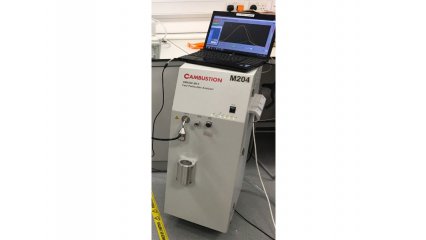
The fast particle analyser (DMS500) uses electrical mobility measurements to produce particle size/number spectra between 5 nanometres and 1 micrometre (soon to be upgraded to 2.5 micrometres).
Since the classification of particles according to their differing electrical mobility takes place in parallel (rather than in series as in a scanning instrument), these instruments can offer the fastest available size/number spectral measurement of its type. The user interface processes the spectral data in real-time to output particle mass, surface area or number, as well as basic spectral information.
Publications
Sharma, A., Omidvarborna, H., and Kumar, 2022. Efficacy of facemasks in mitigating respiratory exposure to submicron aerosols. Journal of Hazardous Materials, 126783.
Goel, A., Kumar, P., 2016. Vertical and horizontal variability in airborne nanoparticles and their exposure around signalised traffic intersections. Environmental Pollution 214, 54-69.
Goel, A., Kumar, P., 2015. Zone of influence for particle number concentrations at signalised traffic intersections. Atmospheric Environment 123, 25-38.
Azarmi, F., Kumar, P., Mulheron, M., Colauxc, J.L., Jeynes, C., Adhami, S., Watts, J.F., 2015. Physicochemical characteristics and occupational exposure to coarse, fine and nanoparticle emissions during building refurbishment activities. Journal of Nanoparticle Research 17, 343, doi: 10.1007/s11051-015-3141-z.
Al-Dabbous, A.N., Kumar, P., 2015. Source apportionment of airborne nanoparticles in a Middle Eastern city using positive matrix factorization. Environmental Science: Processes & Impacts 17, 802-812.
Goel, A., Kumar, P., 2015. Characterisation of nanoparticle emissions and exposure at traffic intersections through fast-response mobile and sequential measurements. Atmospheric Environment 107, 374-390.
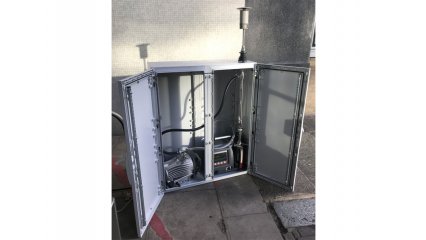
The ELPI®+ (Electrical Low-Pressure Impactor) from Dekati® is a widely-used and well-characterised particle size spectrometer for real-time particle measurements. It enables measurement of real-time particle size distribution and concentration in the size range of 6 nm – 10 μm at 10 Hz sampling rate.
The measurement method is the same for all the particle sizes, making it the only instrument available on the market that operates in such a broad particle size range using only one measurement technique.
Since it also measures a wide range of particle concentrations, it is well suited to both high and low concentration applications, such as environmental air quality or direct combustion source measurements. Its robust structure is designed to be used even in harsh environments and sample conditions, and the high temperature version can be used to sample aerosols directly for temperatures up to 180 °C.
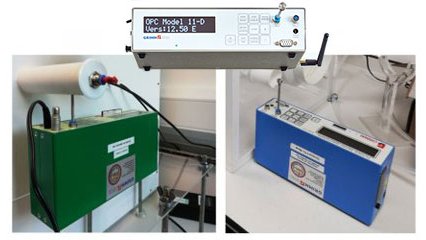
This environmental dust monitor (Grimm) is designed both for stationary and mobile use to measure PM10, PM2.5 and PM1, simultaneously as a standalone measuring system. It is small and light and can be used for a multitude of applications.
This Portable Mini Laser Aerosol Spectrometer is a compact instrument, with reliable optical particle detection for counting and classifying dust particles, as well as advanced data communication. It is suitable for continuous measurements via power supply or flexible usage with a battery and remote control for real-time data acquisition and data analysis. Some benefits include:
- Versatile data acquisition and communication
- Real-time monitoring of particle number and PM values (PM10, PM2.5 and PM1)
- Additional information for particle size distribution, particle surface, and dust mass
- High precision with 31 size channels and good reproducibility
- Integrated 47 mm PTFE-filter (GRIMM dual technology)
- Self-test for all-optical and pneumatic components assures high-quality standards
- Internal rinsing air protects the laser and detector in the optical cell
- Optional sensors for temperature and relative humidity
- Ease of use via keypad or GRIMM software (cordless)
- 11 size channels < 1µm for precise submicron detection
- Total inlet volume flow (1.2 litres/min) is analysed in the optical cell
- Excellent counting statistics and reproducibility at low and high dust concentrations.
Publications
Kumar, P., Omidvarborna, H., Tiwari, A., and Morawska, L., 2021. The nexus between in-car aerosol concentrations, ventilation and the risk of respiratory infection. Environment International, 157, 106814.
Abhijith, K.V. and Kumar, P., 2021. Evaluation of respiratory deposition doses in the presence of green infrastructure. Air Quality, Atmosphere & Health, 14, 911-924.
Kumar, P., Hama, S., Abbass, R.A., Nogueira, T., Brand, V.S., Abhijith, K.V., de Fatima Andrade, M., Asfaw, A., Aziz, K.H., Cao, S.J. and El-Gendy, A., 2021. Potential health risks due to in-car aerosol exposure across ten global cities. Environment International, 155, 106688.
Abbass, R.A., Kumar, P. and El-Gendy, A., 2021. Fine particulate matter exposure in four transport modes of Greater Cairo. Science of The Total Environment, 791, 148104.
Sharma, A. and Kumar, P., 2020. Quantification of air pollution exposure to in-pram babies and mitigation strategies. Environment International 139, 105671.
Ottosen, T.B. and Kumar, P., 2020. The influence of the vegetation cycle on the mitigation of air pollution by a deciduous roadside hedge. Sustainable Cities and Society 53, 101919.
Omidvarborna, H., Kumar, P. and Tiwari, A., 2020. ‘Envilution™’chamber for performance evaluation of low-cost sensors. Atmospheric Environment, 223, 117264.
Abhijith, K.V. and Kumar, P., 2019. Field investigations for evaluating green infrastructure effects on air quality in open-road conditions. Atmospheric Environment 201, 132-147.
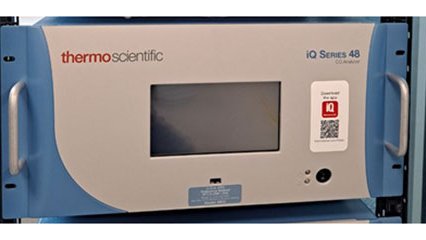
The CO monitoring analyser (model 48iQ) provides the same level of performance to detect carbon monoxide poisoning when measuring the amount of carbon monoxide (CO) in ambient air up to 0-10,000 (ppm or mg/m3) with 0.04 ppm (30-second averaging time) detection limit using the gas filter correlation technique. The response time of the instrument is <2.5 seconds at 1 L/min. It has the capability of working both in the field as well as in the lab.
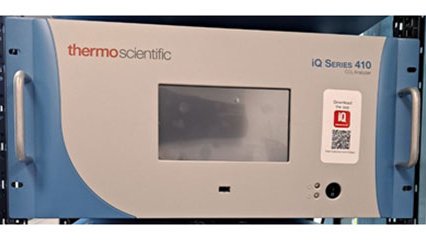
The CO2 analyser (model 410iQ) utilizes advanced Non-Dispersive Infrared (NDIR) technology with optically fixed bandpass interference filters and quantum detection to analyze concentrations of CO2 by up to 10,000 ppm (precision: ±1.0% of reading). It operates at 1.0 L/min and uses an internally stored calibration curve to accurately linearise the instrument output.
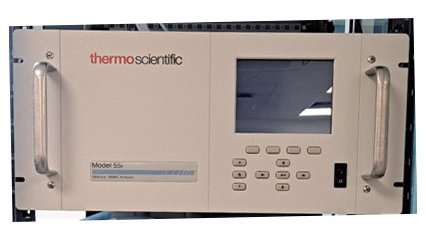
The instrument (Thermo Scientific Model 55i) measures the concentrations of methane and non-methane hydrocarbons (NMHC) using back-flush gas chromatography (GC) at a flow rate of 0.5 L/min. The lower detectable limit of the device is 0.050 ppm CH4 and 0.050 NMHC as propane (300 second averaging time).
Due to its low molecular weight and high volatility, methane moves faster than other organic compounds and is the first to detect by flame ionisation detector (FID) and emerge from the opposite end of the chromatographic column. As the NMHCs reach the FID, they create a signal that is proportional to the total NMHC concentration and can be converted to a ppm reading by comparison with the signal generated by a known standard. Typically, the Methane peak (with a side peak representing Oxygen) will appear in 17 seconds, while the NMHC peak can have varying retention times depending on operating conditions and composition of the sample.

The multi-gas calibrator (Thermo Scientific Model iQ Series 146) precisely control the flow rate of gas standards (from calibration cylinders or optional internal ozone generator) to supply accurate levels of ozone, carbon monoxide, non-methane hydrocarbons, sulfur dioxide, nitric oxide and nitrogen dioxide or other gases that a user may require for calibration.
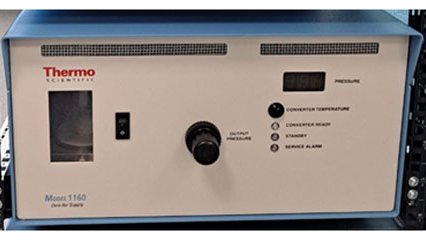
The zero air supply (Thermo Scientific Model 1160) generates ultra high-purity zero air for analytical and process instruments, which can be configured for the removal of a variety of pollutant gases. It is designed for the calibration of environmental instrumentation or as an air supply in analytical laboratories for the conversion of ambient air to pollutant-free air. It can be configured to operate with or without an internal compressor. Some of the features are:
- Up to three scrubbers in optional materials to remove humidity, NO2, CO2, etc.
- Option of dryer types or no dryer at all
- Temperature alarms for system applications
- 20 L/min supply of air.
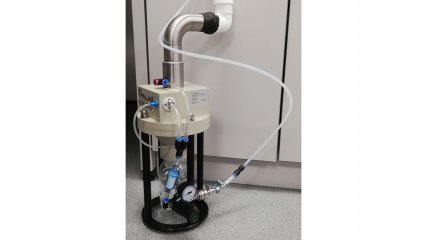
Solid particle aerosols produced from suspensions, e.g. with biological agents, and solutions such as NaCl and KCl, are required for numerous applications in research, development and quality assurance. NaCl/KCl aerosols or aerosols produced from biological agents are prescribed as test aerosols in various standards to ensure comparability of filter media, measuring equipment and filters.
Test aerosols, to deserve to be called such, must be generated consistently in terms of particle size distribution and particle concentration over the test time period. Furthermore, it must be possible to produce the particle size distribution and concentration.
A specially developed nozzle as part of the generator ensures that these requirements are met by preventing the crystallization of the salt crystals at the nozzle outlet. The particle size spectrum can thus be adjusted reproducibly in the range from approx. 5 nm up to 15 µm, depending on the concentration of the solution. This aerosol generator (AGK 2000) is available with a curved drying column and optionally pressure-resistant up to 10 bar.
Publications
Sharma, A., Omidvarborna, H., and Kumar, 2022. Efficacy of facemasks in mitigating respiratory exposure to submicron aerosols. Journal of Hazardous Materials, 126783.
Omidvarborna, H., Kumar, P. and Tiwari, A., 2020. ‘Envilution™’ chamber for performance evaluation of low-cost sensors. Atmospheric Environment, 223, 117264.
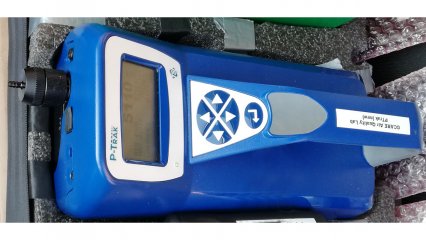
The Ultrafine Particle Counter (TSI P-TRAK) measures aerosol particles ranging from 1000 nm down to 20 nm in size. This instrument gives direct and real-time measurement of workplace ultrafine particulate levels.
Read the ultrafine particle counter manual (PDF)
Publications
Kumar, P., Omidvarborna, H., Tiwari, A., and Morawska, L., 2021. The nexus between in-car aerosol concentrations, ventilation and the risk of respiratory infection. Environment International, 157, 106814.
Sharma, A. and Kumar, P., 2020. Quantification of air pollution exposure to in-pram babies and mitigation strategies. Environment International 139, 105671.
Abhijith, K.V. and Kumar, P., 2019. Field investigations for evaluating green infrastructure effects on air quality in open-road conditions. Atmospheric Environment 201, 132-147.

The portable indoor air quality monitor (TSI Q-Trak model 7575) measures carbon dioxide (CO2), carbon monoxide (CO), total volatile organic compounds (TVOC), temperature and relative humidity, which can be simultaneously displayed. It can also calculate dew point, wet bulb and percent outside air and has a large graphic display that displays up to 5 measurements, has on-screen messages and instructions and supports 12 different languages.
The instrument is designed to work with a wide range of plug-in probes, which expands measurement capability. The range of the device for the CO2 is from 0 to 5000 ppm, with an accuracy of ±3 % and resolution of 1 ppm, while for the CO sensor the range is 0 to 500 ppm, with an accuracy of ±3 % and resolution of 0.1 ppm. Temperature and humidity have a range of 0 to 60°C and 5 to 95%, the accuracy of ±0.5°C and 3 % and resolution of 0.1°C and 0.1 %, respectively.
Further information is given in the indoor air quality monitor manual (PDF).
Publications
Kumar, P., Omidvarborna, H., Tiwari, A., and Morawska, L., 2021. The nexus between in-car aerosol concentrations, ventilation and the risk of respiratory infection. Environment International, 157, 106814.
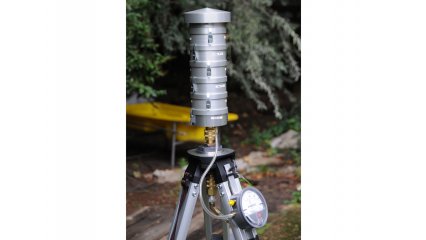
The Harvard impactors or also known as compact cascade impactors (CCI) that consists of four impactor stages and an after filter (backup filter).
The CCI is compact (∼35 cm H and 11 cm O.D.), and is relatively lightweight (∼3.5 kg). Each stage consists of a slit-shaped acceleration nozzle and a rectangular polyurethane foam (PUF) impaction substrate (density = 20 kg/m3, Merryweather Foam, OH).
The PUF substrates are easily inserted and removed from a substrate base and securely transported to a laboratory for gravimetric or chemical analysis. The optimal thickness of the polyurethane foam for all stages is 0.64 cm, which assures that particles do not penetrate through the PUF to the substrate holder.
Ultrafine particles (less than 0.16 μm) are collected on a 47 mm diameter 2μm pore Teflon membrane filter. Other filter materials such as polypropylene fiber (Monadnock, Grade 5300) can also be used to collect the ultrafine particles.
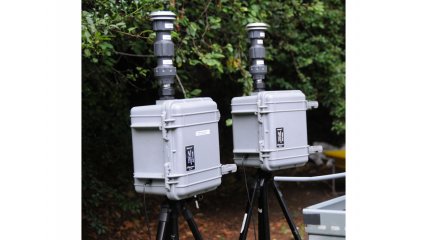
This MiniVol Portable Air Sampler (MiniVol™ TAS) samples ambient air at 5 litres/minute for particulate matter (PM10, PM2.5, TSP). This sampler is lightweight and portable, and gives results that closely approximate data from Federal Reference Method samplers. It is ideal for remote areas or locations where no permanent site has been established.
Publications
Hama, S., Kumar, P., Alam, M.S., Rooney, D.J., Bloss, W.J., Shi, Z., Harrison, R.M., Crilley, L.R., Khare, M. and Gupta, S.K., 2021. Chemical source profiles of fine particles for five different sources in Delhi. Chemosphere, 274, 129913.
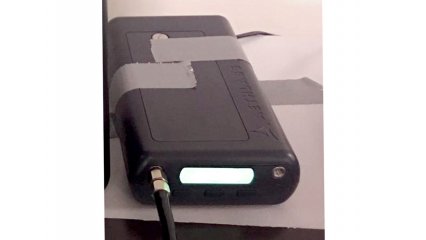
The pocket-sized Black Carbon aerosol monitor is small enough for mobile applications and provides aerosol Black Carbon concentrations in real-time. The device is a self-contained instrument with a built-in pump, flow control, data storage, and battery designed for on-person exposure monitoring.
The instrument can operate continuously for up to 24 hours (microAethAE51) or up to 2-3 weeks (micorAethMA200).
The links to their manuals are available in microAethAE51 (PDF) or microAethMA200 (PDF).
Publications
Sharma, A. and Kumar, P., 2022. Air pollution exposure assessment simulation of babies in a bike trailer and implication for mitigation measures. Journal of Hazardous Materials Advances, 100050.
Sharma, A. and Kumar, P., 2020. Quantification of air pollution exposure to in-pram babies and mitigation strategies. Environment International 139, 105671.
Abhijith, K.V. and Kumar, P., 2019. Field investigations for evaluating green infrastructure effects on air quality in open-road conditions. Atmospheric Environment 201, 132-147.
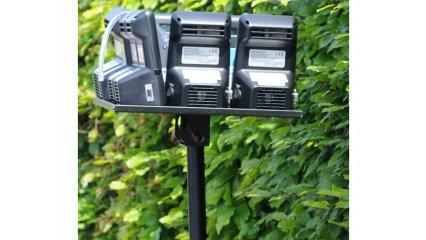
A Laser Particle Counter (Dylos DC1700) with two size ranges (>0.5 and >2.5 microns) - small (bacteria, mold, etc) large (pollen, etc.), this instrument is the company improved, battery-operated air quality monitor.
Like earlier models, it features technology and engineering that allow monitoring of indoor air quality. The LCD screen provides small (>0.5 microns) and large (>2.5 microns) particle concentrations along with a dynamic bar graph showing instantaneous particle activity.
Read the laser particle counter manual
Publications
Sharma, A. and Kumar, P., 2022. Air pollution exposure assessment simulation of babies in a bike trailer and implication for mitigation measures. Journal of Hazardous Materials Advances, 100050.
Kumar, P., Hama, S., Abbass, R.A., Nogueira, T., Brand, V.S., Abhijith, K.V., de Fatima Andrade, M., Asfaw, A., Aziz, K.H., Cao, S.J. and El-Gendy, A., 2021. Potential health risks due to in-car aerosol exposure across ten global cities. Environment International, 155, 106688.
Kumar, P., Hama, S., Nogueira, T., Abbass, R. A., Brand, V. S., Andrade, M. F., Asfaw, A., Aziz, K. H., Cao, S. J., El-Gendy, A., Islam, S., Jeba, F., Khare, M., Mamuya, S. H., Martinez, J., Meng, M. R., Morawska, L., Muula, A. S., SM, S. N., Ngowi, A. V., Omer, K., Olaya, Y., Osano, P., Salam, A., 2020. In-car particulate matter exposure across ten global cities. Science of the Total Environment 750, 141395.
The low-cost particle monitor sensor (OPC-N3) measures particles from 0.35 μm to 40 μm, sorting into 24 size bins.
The sensor features include improved aerodynamics with reduction of particle deposition, better low end performance, extended upper size measurements and high/low flow rate digital selection. It can measure pollution levels up to 2,000 μg/m3 with the unique feature of being able to size speciated pollen.
The Sioutas Personal Cascade Impactor separates and collects airborne particles in different size ranges. It is the only personal impactor that efficiently samples coarse, fine and ultrafine particles simultaneously. The Sioutas Impactor is used with the Leland Legacy sample pump at 9 L/min to ensure precise particle separation at the specified cut-points.
The following features are included:
- Precise particle separation
- Particle size cut-points: 2.5 µm, 1.0 µm, 0.5 µm and 0.25 µm
- Maintains high collection efficiency even at high particle concentrations
- Preserves unstable compounds
- Chemically inert collection substrate
- No impaction grease to contaminate the sample
- Suitable for indoor and outdoor sampling
- Size-fractionated samples can be analysed gravimetrically, chemically, and microscopically.
Some of the applications include its use for studies of occupational hygiene Indoor Air Quality, air pollution, inhalation toxicology and epidemiological, aerosol research, pharmaceutical, and outdoor ambient sampling.
The Active Personal Particulate Monitor is an advanced instrument designed to actively measure the concentration of airborne particulate matter (liquid or solid), providing data logging and a continuous readout.
The instrument (pDR-1500) offers two particle size-selective inlet cyclones, as optional accessories, which permit size segregated measurements (e.g., PM10, PM4, PM2.5, PM1, etc.) enabling the user to perform aerodynamic particle discrimination by varying the sampling flow rate. The pDR-1500 incorporates, downstream of its photometric sensing stage, a 37-mm filter holder on which all sampled particles are collected for subsequent analysis of gravimetric reference calibration.
Read the instruction manual (PDF)
Publications
Abbass, R.A., Kumar, P. and El-Gendy, A., 2021. Fine particulate matter exposure in four transport modes of Greater Cairo. Science of The Total Environment, 791, 148104.
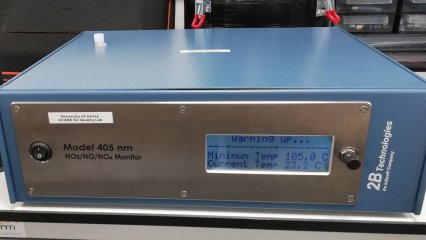
The NOx Monitor (2B Technologies; Model 405 nm) is designed for the direct measurement of atmospheric nitrogen dioxide (NO2), nitric oxide (NO) and total reactive oxides of nitrogen (NOx = NO + NO2).
The concentration range is 0-10,000 ppb (0-10 ppm) for NO2 and 0-2000 ppb (0-2 ppm) for NO with high precision and accuracy. NO2 is measured directly by absorbance at 405 nm. NO is measured by selective conversion with ~100% efficiency using the highly selective reaction of NO with ozone (O3). Total NOx is obtained by addition of NO and NO2.
Read the monitor's manual (PDF)
Publications
Ottosen, T.B. and Kumar, P., 2020. The influence of the vegetation cycle on the mitigation of air pollution by a deciduous roadside hedge. Sustainable Cities and Society 53, 101919.
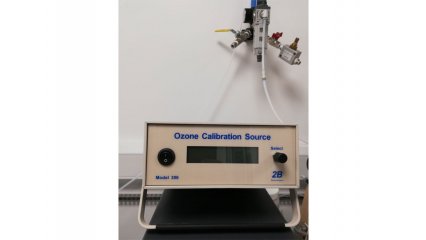
The Ozone Generation and Calibration instrument (Model 306 Ozone Calibration Source™) is a portable source of ozone that allows users to generate/calibrate ozone. The instrument scrubs ozone from ambient air and can produce any mixing ratio of ozone in the range of 30 to 1000 ppbv up to 3.0 L/min volumetric.
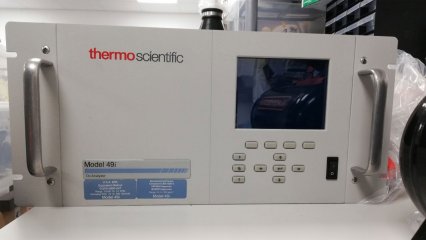
The Ozone Analyser (Model 49i) measures the concentration of ozone in the ambient air with the dual-cell, UV photometric Ozone Analyser. The key features include the following:
- Measures concentrations of ozone in the air from 0.05 ppb p to 200 ppm
- Dual and auto ranges as standard features with a response time of 20 seconds
- User-settable alarm levels for concentration and for a wide variety of internal diagnostics
- Ethernet port as well as flash memory for increased data storage and field upgrade capabilities.

The use of this small portable CO2 logger (MX1102 model) makes it more convenient than ever to measure and record CO2 in buildings and other non-condensing environments.
It measures CO2 from 0 – 5000 parts per million (ppm) – and the free instrument’s mobile app allows access to data directly from the mobile phone or tablet within a 100-foot range. The instrument also features a USB port so that it can be used with a computer running the manufacturer’s own graphing and analysis software.
Publications
Sharma, A. and Kumar, P., 2022. Air pollution exposure assessment simulation of babies in a bike trailer and implication for mitigation measures. Journal of Hazardous Materials Advances, 100050.
Kumar, P., Omidvarborna, H., Pilla, F. and Lewin, N., 2020. A primary school driven initiative to influence commuting style for dropping-off and picking-up of pupils. Science of the Total Environment, 138360.

A fast response 4-way solenoid switching system for pseudo-simultaneous measurements of particulate and gaseous air pollutants has been designed and manufactured in our centre.
The instrument operates by automatically switching the sampling flow between four different locations while tracking solenoid switching times and sampling locations. The instrument manual is available locally.
Publications
Sharma, A., Omidvarborna, H., and Kumar, 2022. Efficacy of facemasks in mitigating respiratory exposure to submicron aerosols. Journal of Hazardous Materials, 126783.
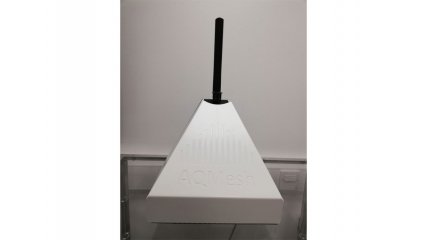
AQMesh is an air quality monitor for measuring pollutants in ambient air using electrochemical sensors. The sensor measured the NO (0-20,000 ppb), NO2 (0-20,000 ppb), SO2 (0-100,000 ppb), CO (0-1,000,000 ppb), and O3 (0-20,000 ppb) at 15 minutes temporal resolution.
The sensor pod also measures temperature, relative humidity and atmospheric pressure. Manufactured in the UK by Environmental Instruments Ltd, the monitor is supported worldwide through a global network of distributors. It has been designed to offer a robust and easy-to-use air quality monitoring system that can deliver localised real-time readings; thus improving the accuracy and scope of gathering air quality data to support initiatives that reduce air pollution and its risk to human health.
Publications
Kumar, P., Omidvarborna, H., Kooloth Valappil, A. and Bristow, A., 2021. Noise and air pollution during lockdown around a school site in the UK. The Journal of the Acoustical Society of America, 149, A27-A27.
Ottosen, T.B., Kumar, P., 2019. Outlier detection and gap filling methodologies for low-cost air quality measurements. Environmental Science: Processes and Impacts 21, 701-713.
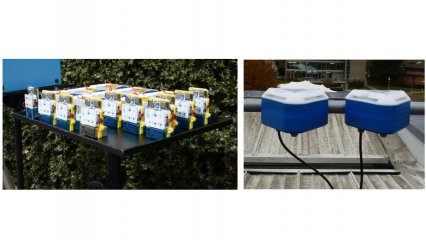
Smart Citizen Kit
The Smart Citizen Kit is the core of what we call the Smart Citizen System: a complete set of modular hardware components aiming to provide tools for environmental monitoring, ranging from citizen science and educational activities to more advanced scientific research.
The system is based on the principle of reproducibility, and integrates non-hardware components such as a dedicated storage platform and a sensor analysis framework. The Smart Citizen Kit's new sensors generation measures air temperature, relative humidity, noise level, ambient light, barometric pressure and particulate matter (PM).
Smart Citizen Station
The Smart Citizen Station was born with the idea to provide the iSCAPE Living Labs with a system for monitoring the performance of their interventions. The Station aims at providing a solution that can be used by the Living Labs not just from a scientific point of view but also as a tool to engage local communities on air pollution-related issues.
The station is designed with a modular principle where sensors can be added easily expanding the capabilities of the installation or replaced when they are damaged or the sensor's lifetime is over. From a cost perspective, while being more expensive than the Smart Citizen Kit, it is also perceived as a low-cost solution.
The design builds on the Smart Citizen Kit concept by adding an extra set of more accurate sensors especially aimed at measuring air pollutants. The sensors include:
- Gas Sensor Board, featuring EC Carbon Monoxide
- Nitrogen Dioxide and Ozone sensors
- PM Sensor Board, featuring a PM2.5/PM10 sensor.
Documents
Read more about the Smart Citizen Kit and Living Lab Station.
Publications
Kumar, P., Omidvarborna, H., Pilla, F. and Lewin, N., 2020. A primary school driven initiative to influence commuting style for dropping-off and picking-up of pupils. Science of the Total Environment, 138360.
Mahajan, S. and Kumar, P., 2020. Evaluation of low-cost sensors for quantitative personal exposure monitoring. Sustainable Cities and Society 57, 102076.
Mahajan, S., Kumar, P., Pinto, J.A., Riccetti, A., Schaaf, K., Camprodon, G., Smári, V., Passani, A. and Forino, G., 2020. A citizen science approach for enhancing public understanding of air pollution. Sustainable Cities and Society 52, 101800.
Ottosen, T.B. and Kumar, P., 2020. The influence of the vegetation cycle on the mitigation of air pollution by a deciduous roadside hedge. Sustainable Cities and Society 53, 101919.
Mahajan, S. and Kumar, P., 2019. Sense Your Data: Sensor Toolbox Manual, Version 1.0.
The Air Sampling Pump is the ultimate in high flow sampling providing high flows and long run times of a vacuum-style pump in a compact, portable and battery-operated sampler.
The instrument has the following features:
- Ideal for 24-hour indoor air monitoring or unattended ambient air sampling
- High flows and long run times with low operational noise
- Advanced compensated flow control.

The Relative Humidity Generator (Model RH-200) is a fully automated, compact, portable bench-top instrument, which supplies specified constant air or nitrogen flow rates with precision-controlled relative humidity.
The generator is designed to easily integrate with the Envilution(R) chamber. It is easy to install and includes a Heated Transfer Line with adjustable temperature control to eliminate condensation between the generator and the chamber.
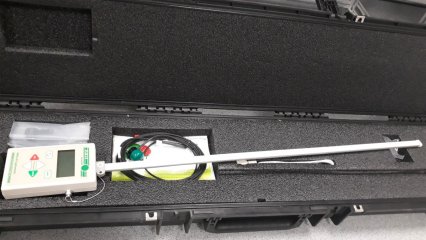
The ACCUPAR (model LP-80) is a lightweight, portable, linear photosynthetically active radiation (PAR) sensor. It allows the measurement of canopy PAR interception and calculation of leaf area index (LAI) at any location within a plant or forest canopy.
The ACCUPAR weighs a little over 0.5 kg. The attached controller, powered by four AAA batteries, can be used to take measurements manually or can log data unattended for short periods of time. It stores 1 MB of data (over 2000 readings) for later download and analysis. The external PAR sensor can be used to make simultaneous above- and below-canopy PAR measurements. Using both the external sensor and the ACCUPAR together allows accurate PAR and LAI data to be collected in clear, partly cloudy, or overcast sky conditions.
Publications
Abhijith, K.V. and Kumar, P., 2021. Evaluation of respiratory deposition doses in the presence of green infrastructure. Air Quality, Atmosphere & Health, 14, 911-924.
Ottosen, T.B. and Kumar, P., 2020. The influence of the vegetation cycle on the mitigation of air pollution by a deciduous roadside hedge. Sustainable Cities and Society 53, 101919.
Abhijith, K.V. and Kumar, P., 2020. Quantifying particulate matter reduction and their deposition on the leaves of green infrastructure. Environmental Pollution 265, 114884.
Abhijith, K.V. and Kumar, P., 2019. Field investigations for evaluating green infrastructure effects on air quality in open-road conditions. Atmospheric Environment 201, 132-147.
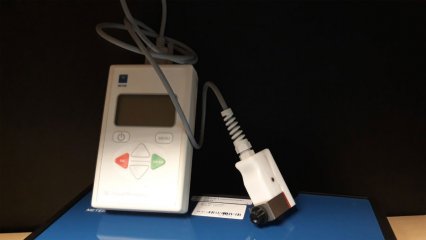
The Leaf Porometer is a battery-operated, menu-driven device that measures stomatal conductance of leaves. Stomatal conductance is a function of the density, size, and degree of opening, of leaf stomata.
The Leaf Porometer measures stomatal conductance by putting the conductance of a leaf in series with two known conductance elements, and comparing the humidity measurements between them.
It can display information in three selectable units:
- Millimoles per metre squared seconds
- Metres squared seconds per mole
- Seconds per metre.
Stomatal conductance can be used to evaluate plant water use, quantify water stress and compare physiological responses of different plant species. The main features include:
- Conductance Range: 0 to 1000 mmol m-2 s-1
- Accuracy: ±10%
- Operating Environment: 5 to 40 °C, 0 to 100% RH, non-condensing
- Units: mmol m-2s-1, m2/s mol-1, s/m
- Sample Chamber Aperture: 6.3 mm
- Sensor Head Cable Length: 1.2 m
- Measurement Time: 30s in auto mode
- Power: Four AA alkaline batteries
- Data storage: 4,095 measurement in flash memory.
The all-in-one meteorological sensor (ClimaVUE™50) fulfils the common weather monitoring needs with simplicity when paired with any of Campbell Scientific's highly flexible and scalable data collection platforms.
This sensor uses SDI-12 to report air temperature, relative humidity, vapour pressure, barometric pressure, wind (speed, gust, and direction), solar radiation, precipitation, and lightning strike (count and distance). It does this with no moving parts and consumes little power. A built-in tilt sensor assures long-term data integrity.
This diverse product is great for quick deployment, for remote locations, for large networks, as part of a more complex system, or if just a simple instrument is required.
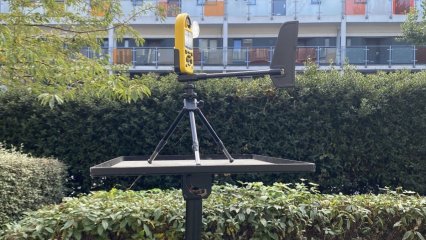
This portable weather meter (Kestrel 5500) is highly accurate and reliable. It measures every environmental condition (e.g. temperature and relative humidity) plus wind direction, crosswind and headwind/tailwind. This mini weather station is drop-proof, dust-proof, water-proof and able to withstand extreme environments without damage.
This data logger uses wireless communication between monitoring locations and the logger, and between the logger and the internet. The logger 'pushes' data to the web servers so that users are able to view live data 24/7.
Building on the success of its predecessor, this second generation data logger is now available, taking data capture and network management to a new level. It offers up to 255 channels of data, each one of which can be specified with a different communication frequency and data averaging rate. The capacity of the memory has been increased to 2GB on a micro SD card providing years of on-board data backup.
In addition to pulse and analog, the logger is now able to accept inputs from sensors and analysers in a wide variety of communication methods including SDI12, RS232, RS485, Ethernet, USB, and WiFi. XBee radio nodes plus longer range radio frequencies are also now supported and new cellular modem options include faster 3G and an optional GPS locator.
Typical applications for the Logger include those for which live access to field data is required for example, monitoring of air quality, traffic, water, noise, process, and weather.
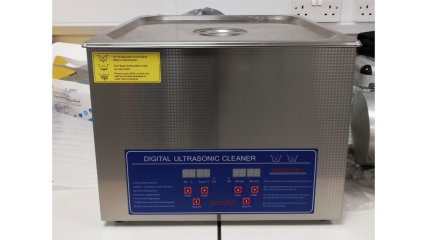
The digital ultrasonic cleaner has the following features:
- 6L capacity tank for professional cleaning
- 180W power and 40KHz strengthened transducer makes the ultrasonic more powerful
- Timing Function: 1-30 minutes adjustable.
The ultrasonic cleaner could be used with water/solvents to wash and clean loosely adhering particles attached to the air quality instrument parts.
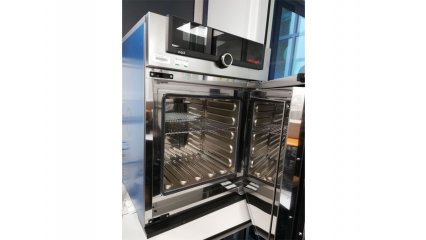
The Memmert steriliser SF55 with forced air circulation (with 1 grid 53L) complies with all relevant standards and regulations for medical products and guarantees reliable program sequences irrespective of the load and chamber volume.
The steriliser has the following features:
- Temperature range up to +250 °C
- Forced air circulation.
The steriliser has a wide range of applications in environmental research as well as industrial quality testing, especially for keeping filter papers before and after sampling at certain temperatures.
The thermocouple (VA8060) is a powerful thermometer that accepts input of K and J type thermocouples. This economical type K and J thermocouple thermometer provides accurate and reliable temperature measurement in an economic and compact design.
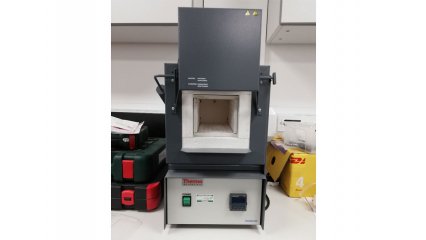
The Benchtop Muffle Furnace has the capability to heat up quickly and is energy efficient, which is ideal for ashing most types of organic and inorganic samples, heat treating of small steel parts, performing ignition tests, conducting gravimetric analysis and for the determination of volatile and suspended solids.
The muffle furnace also has the following features:
- Digital single setpoint temperature control up to 1100°C
- Single display system to show actual temperature/setpoint
- Ceramic fibre insulation to permit faster heat up and reduce energy consumption
- Embedded heating element on top and both sides to improve temperature uniformity
- Drop-down door for loading and unloading plus door safety switch
- Thermocouple break protection to prevent failure in runaway conditions
- 0.95cm (0.38in.) diameter port in the chamber rear for monitoring temperatures with independent measuring devices.
The actigraphy watch (MotionWatch 8) is used for the monitoring of sleep, circadian rhythm and physical activity.
Trusted by clinical and research professionals around the world, this watch is one of the solutions for convenient long-term behavioural monitoring with high patient compliance.
The heart rate sensor is used for measuring health conditions of operators during certain experiments and has the following features:
- New accuracy for measuring heart rate with electronics and algorithms
- Pro chest strap with one extra electrode to prevent interference
- The H10 has hours worth of memory to record data without the need of a wrist unit.
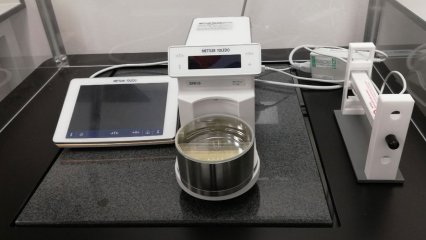
With a readability of 0.001 mg, the XPR10 microbalance is capable of handling most basic weighing tasks for different applications like laboratory testing and chemical analysis. The microbalance offers 1 µg of readability with maximum capacity of 10 gr.
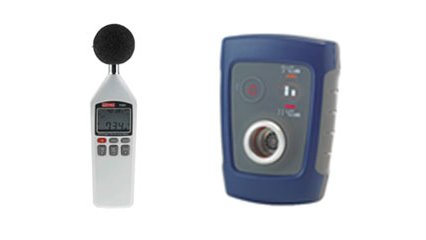
The 8KHz digital sound level meter has A, C, Z frequency weightings with measuring range from 30dB to 130dB (with 0.1dB resolution). The performance of the instrument is certified by ANSI S1.4: 1983 Type 2 and IEC 61672-1: 2013 Class 2. The instrument operates with a 006P 9V or NEDA 1604 or IEC 6F22 type battery. Some of the features and benefits are as follows:
- Fast, Slow and Impulse dynamic characteristic models
- Minimum/maximum operating temperatures -10°C/50°C
- Auto data memory micro SD CARD 4GB
- Back-screw for tripod fixture
- Maximum, minimum, and peak hold sound pressure level
- Micro-USB interface.
The field calibration of sound level meters is an essential procedure when carrying out any type of noise survey both before and after each measurement sequence. This ensures that sound level measuring instruments are providing consistently accurate readings necessary for monitoring to ensure compliance with workplace and environmental noise regulations. The Class 2 Acoustic Calibrator is designed for use in field environments and manufactured to comply with the requirements of IEC 60942: 2003 and ANSI S1.40: 2006. These standards stipulate accurate calibration over a wide range of temperature, humidity and pressure conditions, typical of fieldwork, ensuring accurate calibration in all conditions.
Some of the specifications are as follows:
Attribute | Value |
|---|---|
Sound output | 114dB |
Frequency | 1kHz |
Accuracy | ±0.6 dB |
Microphone size | ½ inch |
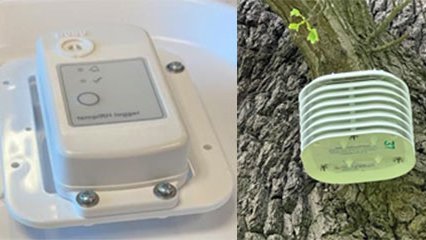
The temperature/RH data logger (Hobo MX2301A with outdoor casing) is a weatherproof data logger with built-in temperature and relative humidity sensors. Leveraging Bluetooth Low Energy, the logger enables easy, fast set up and data download directly from your mobile device and provides high-accuracy measurements in harsh outdoor environments. The device has an accuracy of ±0.2C° and ±2.5% RH. The device operating range is 0 to 100% RH, -40° to 70°C, while exposure to conditions below -20°C or above 95% RH may temporarily increase the maximum RH sensor error by an additional 1%.

This portable isolation transformer is suitable for applications where a 110 V voltage supply needs to be isolated. There is a thermal-magnetic trip on the separating transformer that stops it from overloading. This prevents you from receiving an electric shock, as it isolates any tools that are connected to the main power supply. It can be also reset manually.
Features and benefits
- 5-minute short time
- Primary voltage rating of 110 V and secondary voltage rating of 230 V
- Power rating of 3.3 kVA
- 2 x 16 A output current
- Schuko plug and socket type
- Weight of 18 kg (dimensions of 195 mm x 195 mm x 265 mm)
- Operating frequency range of 50 - 60 Hz
- Standalone mounting.
Make an enquiry
If you require the use of any of our instruments, or have a question, then please get in touch with us.

Professor Prashant Kumar
Co-Director, Institute for Sustainability, Professor and Chair in Air Quality and Health; Founding Director, Global Centre for Clean Air Research (GCARE)